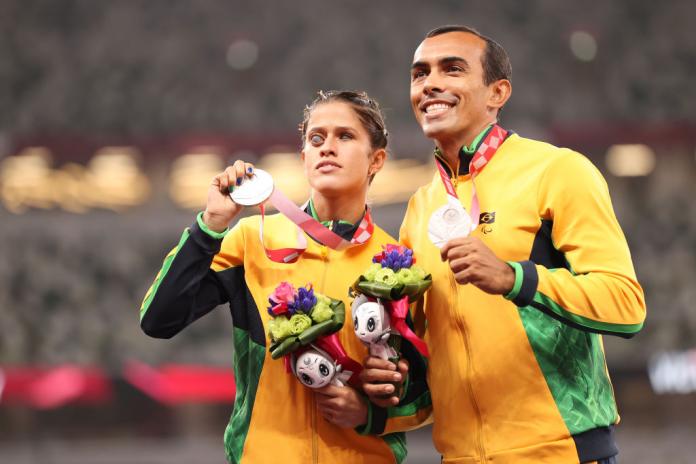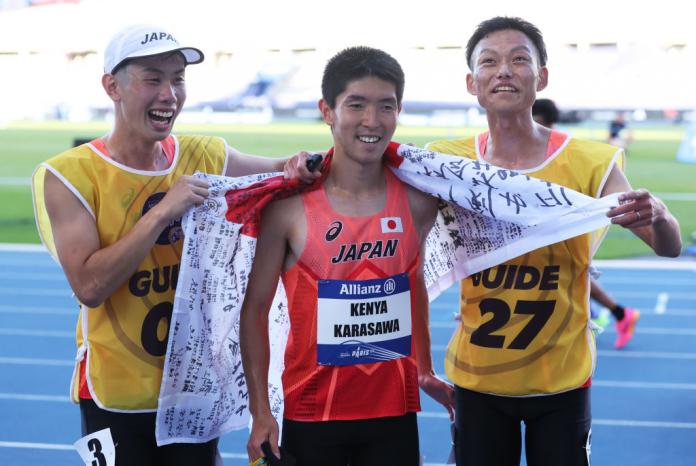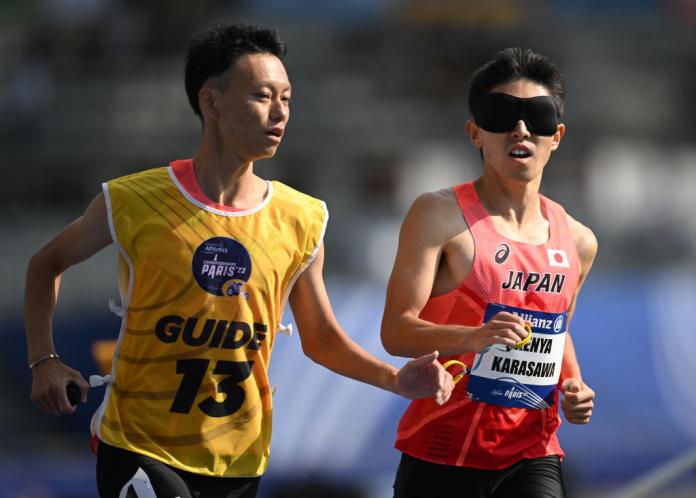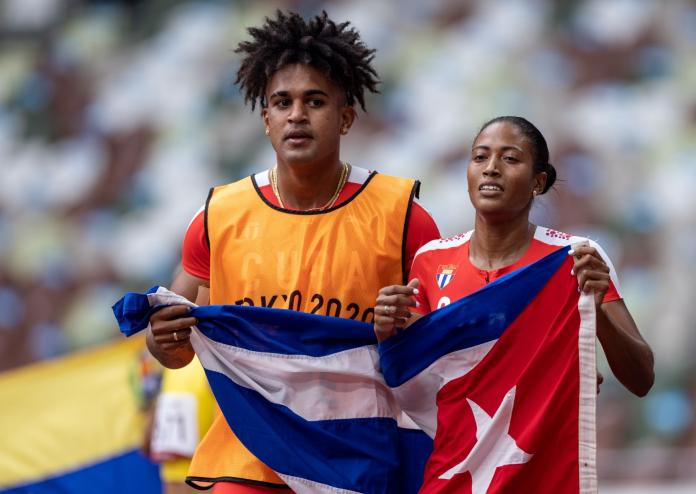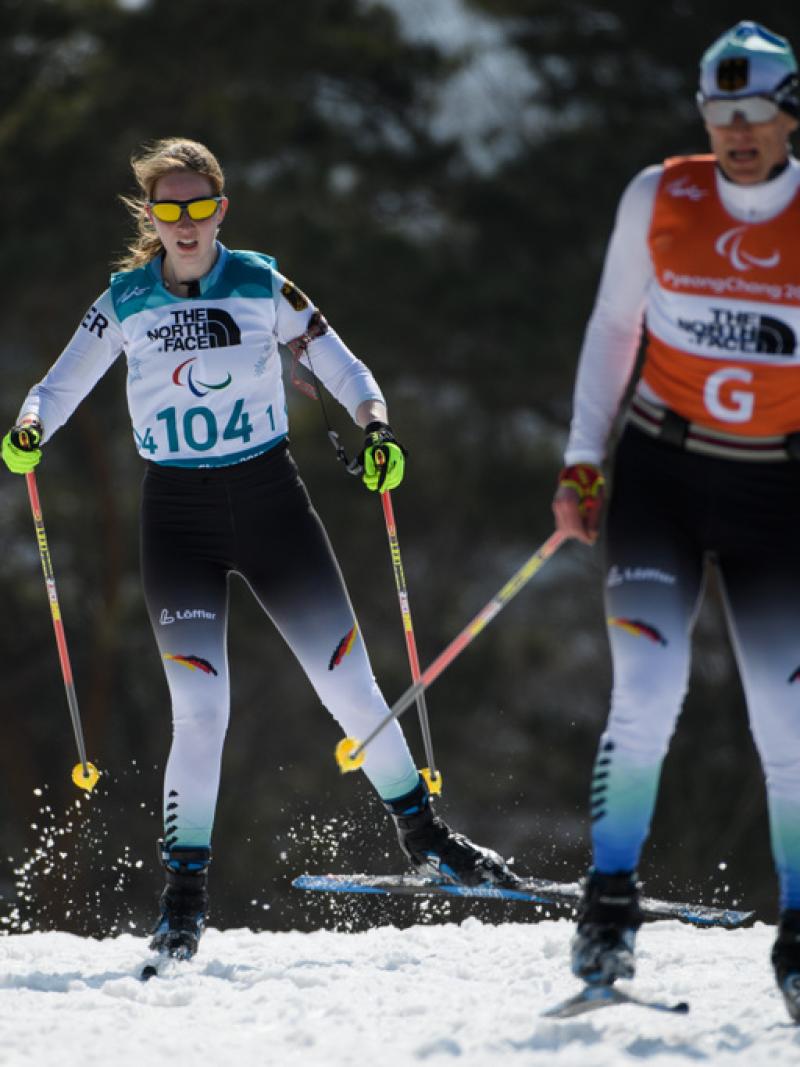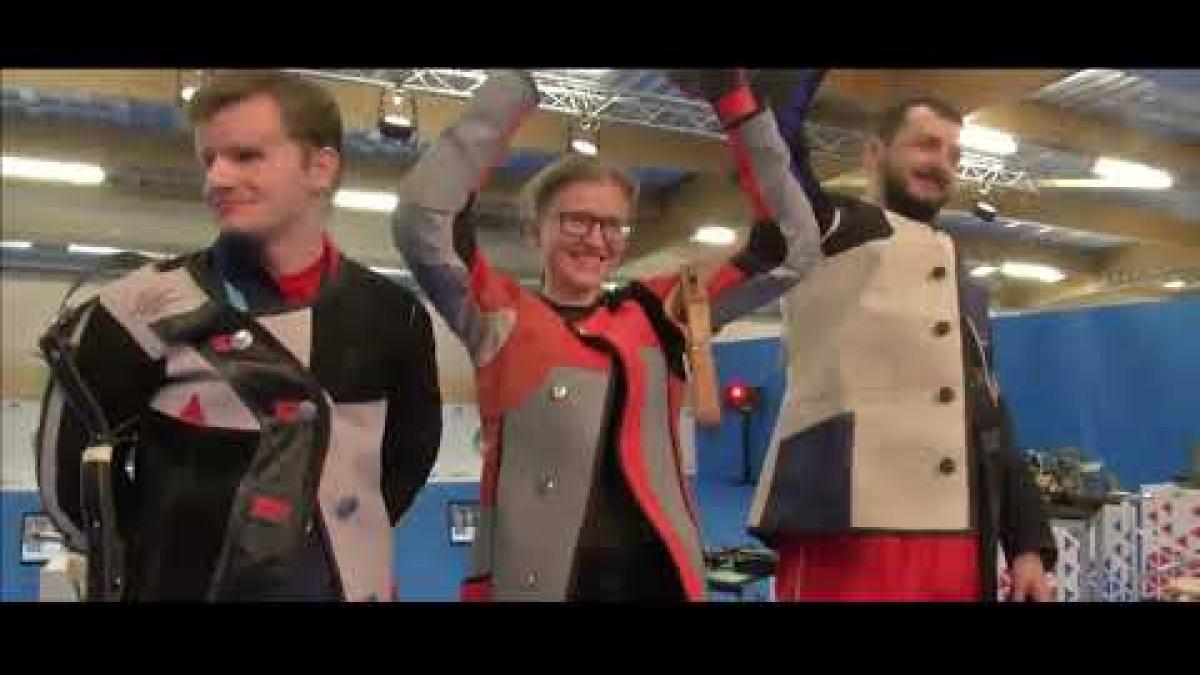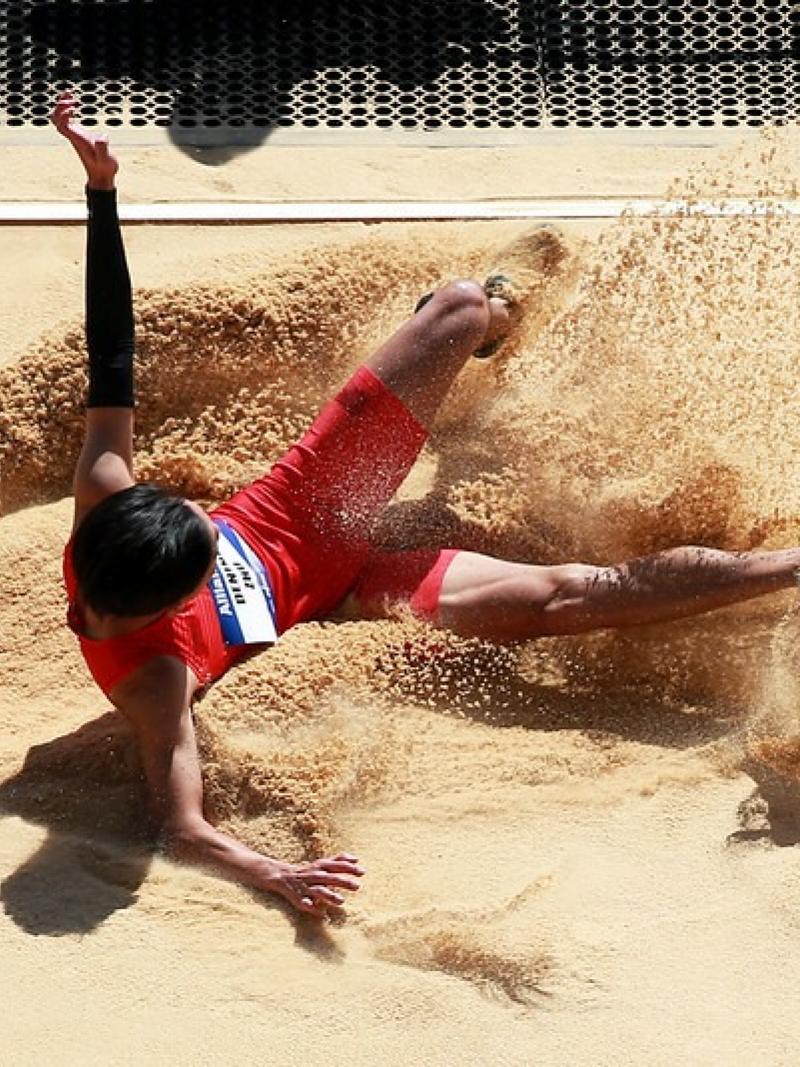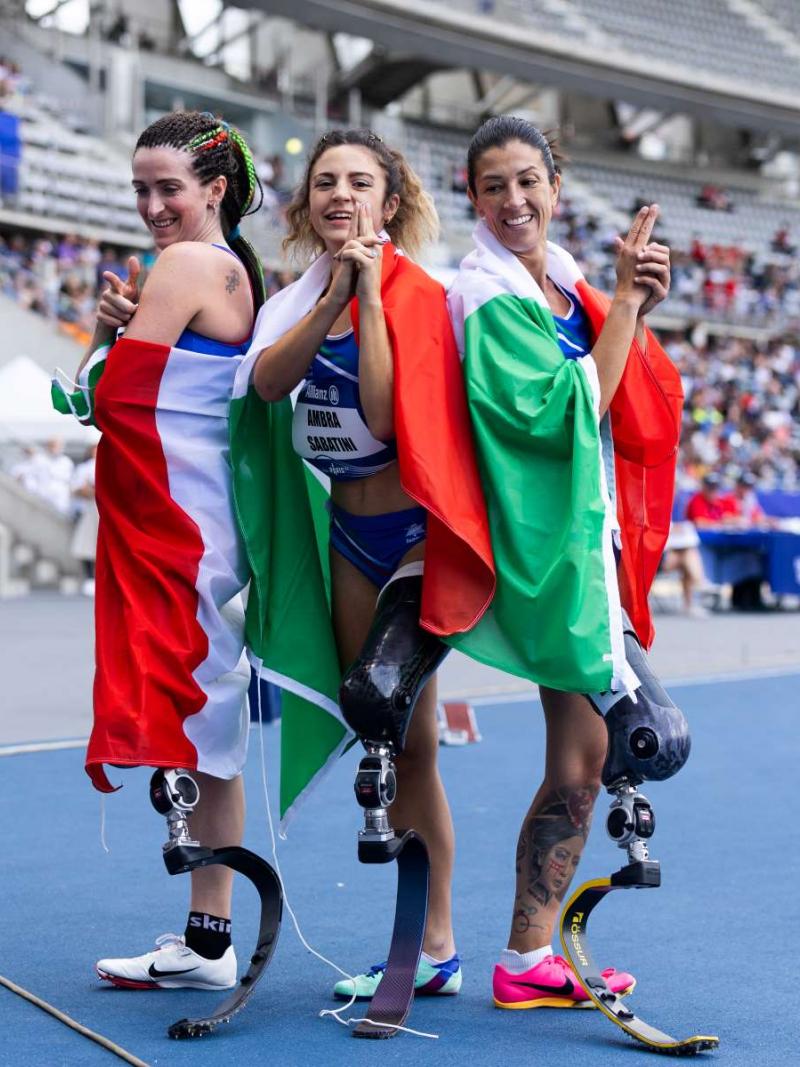How sprinters with vision impairment and their guides compete in sync
We asked Paralympic medallists competing at the Paris 23 Para Athletics World Championships to share their secrets 16 Jul 2023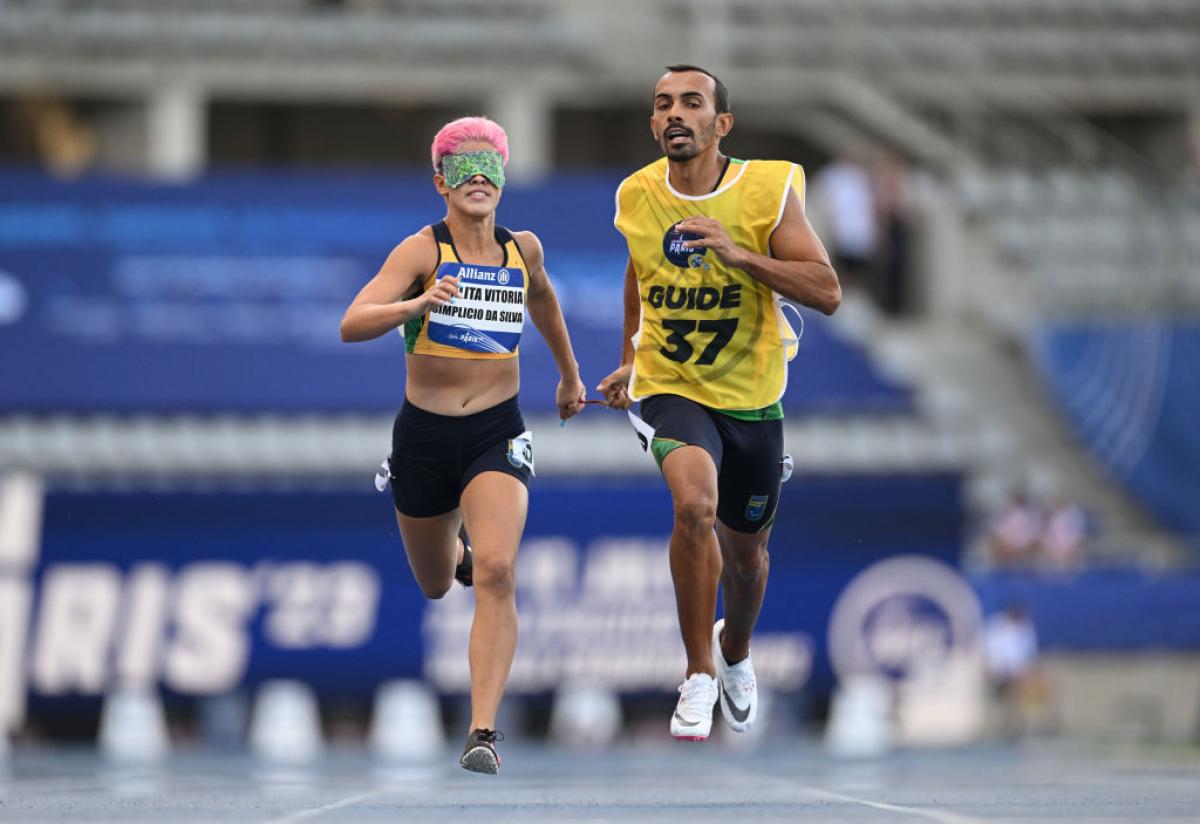
At the Paris 23 Para Athletics World Championships, Thalita Vitoria Simplicio Da Silva waits for her race to start. But she is not alone – her sighted guide-runner Felipe Veloso stands beside her. Wearing a colourful blindfold that goes well with her pink hair, the Brazilian sprinter starts running with a tether, a small equipment with two hoops at the end that allows Para athletes with vision impairment to compete with their guides.
As the crowd watches quietly, the pair sprint to the finish line in perfect sync and celebrate together.
“The partnership goes on all the time, all of the time. We’ve been building our relationship for 11 years,” Simplicio Da Silva said. “We agree before taking the track what our strategy will be during the race.
“We’ve been growing and sport is my life and my passion - Everything that I have,” she added.
In track events, Para athletes with vision impairment are classified as either T11, T12 or T13. Athletes in the T11 class use blindfolds and compete with a guide-runner, while T12 athletes have an option of being accompanied by a guide-runner or competing by themselves. Both the athlete and the guide receive medals on the podium.
While guide-runners accompany Para athletes, they are not allowed to push or pull the athletes during competition. They also support Para athletes get ready on the starting blocks ahead of races.
But how do they run so perfectly in sync? We asked three pairs that reached the podium at the Paris 23 Para Athletics World Championships.
Thalita Vitoria Simplicio Da Silva and Felipe Veloso (Brazil)
Since meeting more than a decade ago, Veloso has seen Simplicio as more than a fellow athlete. The athlete is like his daughter, while he sees himself as a father, a psychologist and a friend.
Together, they have captured three silver medals across two Paralympic Games, including two at Tokyo 2020.
“We talk a lot and support each other, even though I am 20 years older than Thalita. She often tells me when I’m wrong and I always say that I learn more from her than I teach her,” the guide said. “What makes us strong is knowing that we can count on each other in any situation.”
The job of a guide starts long before the race, Veloso explains. In the morning, he takes her to breakfast, tells her about the food that is served, and serves it for her. During the race, he does all the talking.
“From the beginning, Thalita enters in concentration mode,” Veloso said. “When we are at the starting block, I tell her that she needs to play, have fun and this is a moment of leisure.
“When the starting gun goes off, I need to talk about the curve on the track. She listens to my commands and tries to do her absolute best.”
While being a guide-runner comes with challenges, the rewards are far greater.
“The biggest challenge of being a guide is knowing that I am Thalita’s eyes and I need to be responsible for explaining things to her as much as possible and be careful in the way I speak,” Veloso said.
“But this is very rewarding for me, being able to be someone’s eyes, especially Thalita, who is a special person and an exceptional athlete. I am extremely grateful for everything she has given me in my life and I think this has been the secret to our success – knowing the importance that one has in each other’s life."
Kenya Karasawa and Koji Kobayashi (Japan)
Kenya Karasawa, who won two medals at Paris 23, says that listening to his guide-runner is vital.
“I listen to my guide’s footsteps and take my rhythm based on what I hear,” Karasawa said. “All of my guide-runners have their own running forms and the way they run differs from person to person. So I also ask them to follow my rhythm as well.”
Karasawa topped the podium in the men’s 5,000m T11 with guide-runner Shunya Morishita, claiming gold in a championship record time of 15:05.19. He followed that up with a silver medal in the men’s 1,500m T11 alongside guide Koji Kobayashi.
After discovering the sport during Rio 2016, Karasawa soon found success, winning the silver medal in the men’s 5,000m T11 in his Paralympic debut at Tokyo 2020.
“I can’t run by myself so the most difficult part was getting more people who can support me. I’ve been able to succeed because I have a sense of appreciation for everyone who support me and because I concentrate very well.”
Kobayashi, who has been one of Karasawa’s guides since 2021, says he focuses on matching the movement of his hands with the Para athlete’s hands so they can run at the same speed.
“As I guide, I can aim to become world No. 1 – that’s what I like about it,” Kobayashi said.
Omara Durand and Yuniol Kindelan (Cuba)
When it comes to Para athletics, Omara Durand needs no introduction. The Cuban sprint queen enjoys the perfect chemistry with her guide-runner Yuniol Kindelan.
She is one of the most successful Paralympic sprinters of all time, having won eight gold medals across three Games, including a clean sweep of 100m, 200m and 400m T12 at both Rio 2016 and Tokyo 2020.
So what is the secret behind her long-term success with Kindelan?
“If it’s a secret I can’t tell,” Durand said with a laugh. “There is no secret, it’s about training every day, the dedication and caring about each other. We work together every day and that’s why everything is so well synchronised.”
Kindelan said that one of the biggest challenges of being Durand’s guide is topping their own expectations.
“But the reward is that this is a nice, beautiful job. As we achieve bigger results, I realise that the work was well worth it, and there is also no greater satisfaction than taking home the gold medal,” he said.
“We are similar in a lot of things. Since we started we have done an incredible job because we agree on so many things. And we don’t have any differences so far. We get along well and we are great friends and that is what makes us better.”





